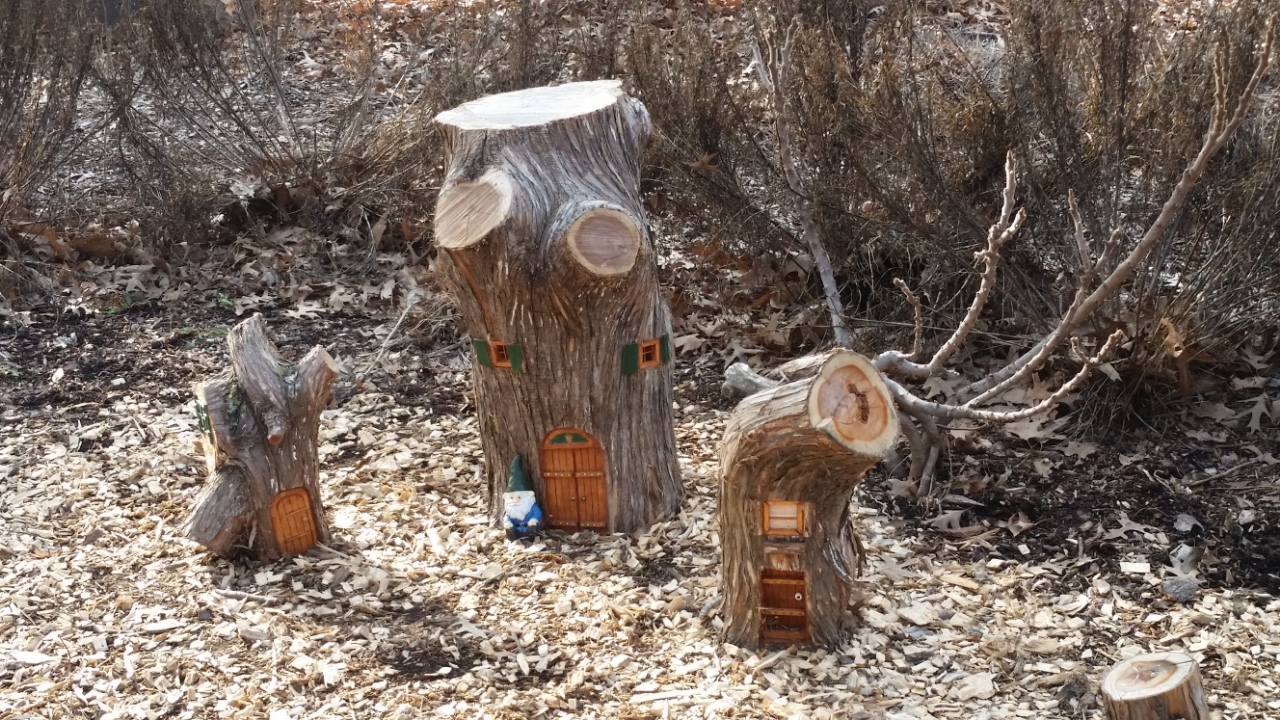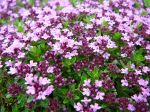By Julie Bawden-Davis
 Long before humans roamed the forests, fairies are said to have taken up residence in the cavities of trees, forming fairy houses where they took refuge. Dating back to the Middle Ages, fairy folklore says that these little beings possess supernatural powers.
Long before humans roamed the forests, fairies are said to have taken up residence in the cavities of trees, forming fairy houses where they took refuge. Dating back to the Middle Ages, fairy folklore says that these little beings possess supernatural powers.
Many believe that fairies come from the elements—in fact, from Mother Nature herself. For that reason, it makes sense to add fairies to your garden. Even better, adding fairy gardens to your landscape elevates the magic and mystery of your landscape.
How to Make Your Own Fairy Garden
Whether you believe in fairies or not, anyone can make their very own fairy garden. A wide variety of herbs work well in these mini wonderlands. In fact, the diminutive nature of some herbs, like thyme and oregano, makes them fairy garden favorites.
To create your own container fairy garden using herbs and fairy garden accessories, keep the following tips in mind.
Dream a Little Dream
 The first step to creating a magical miniature garden is to dream up what you want the garden to be. A good way to do that is to start with a theme. Just like when you throw a party, knowing the theme allows you to plan and design the garden better.
The first step to creating a magical miniature garden is to dream up what you want the garden to be. A good way to do that is to start with a theme. Just like when you throw a party, knowing the theme allows you to plan and design the garden better.
The theme could be just about anything. Do a little daydreaming, and see what comes to mind. While doing so, ask yourself where you’d like to go if you were a fairy. A mountain retreat, maybe? A secret garden, perhaps? Or how about a beachside resort? The only limits are your imagination, and that’s truly limitless.
Choose Your Fairy
There are a wide variety of fairy figurines available to reside in your fairy garden. The type of figurine you choose can also help dictate the theme. Generally, if you’re planting a small fairy garden, it’s best to choose just one fairy and a supporting character or two like miniature ceramic animals.
Select Accessories
Once you have a theme, the ideal types of accessories quickly spring to mind. Using a cottage garden theme as an example, you will want to look for items such as a white picket fence, miniature stepping stones, a birdbath, and a gazebo or trellis.
Decide on Plants
 For your cottage garden, you can’t use large flowering plants like foxglove or larkspur as you’d find in a human-sized landscape, but you can bring flowers to your Lilliputian paradise with small blooming plants like Erodium spp. (stork’s bill, heron’s bill) and miniature roses (Rosa sp.). Many trailing herbs, such as the aptly named ‘Elfin’ thyme, also flower in the spring. Polka Dot Plant (Hypoestes) adds color to your fairy garden all year long.
For your cottage garden, you can’t use large flowering plants like foxglove or larkspur as you’d find in a human-sized landscape, but you can bring flowers to your Lilliputian paradise with small blooming plants like Erodium spp. (stork’s bill, heron’s bill) and miniature roses (Rosa sp.). Many trailing herbs, such as the aptly named ‘Elfin’ thyme, also flower in the spring. Polka Dot Plant (Hypoestes) adds color to your fairy garden all year long.
Pick a Focal Point
The secret to creating a magical miniature garden that captures the attention of humans and fairies is to remember that in fairyland, less is more. For an effective, eye-catching miniature garden, be selective in your accessory and plant choice. Avoid packing too much into your garden, as it will look cluttered. From the handful of items you’ve selected, choose a plant or accessory to which the eye will be drawn. Then design the garden around that focal point.
Add Action and Tell a Story
 The way to put life into your fairy garden is to add some action. Set the stage in your fairy garden by creating the illusion that something is going on. The secret is to give the viewer the “idea” of movement. What creates that illusion is how the fairy relates to her (or his) environment.
The way to put life into your fairy garden is to add some action. Set the stage in your fairy garden by creating the illusion that something is going on. The secret is to give the viewer the “idea” of movement. What creates that illusion is how the fairy relates to her (or his) environment.
Think about how you position the fairy in relation to the environment. Is she pointing up at a miniature tree? Or maybe she is interacting with a fellow animal figurine. Position a fairy with her arms outspread facing a little kitty looking up at her intently, and while creating action, a story comes to life. The fairy has looked for her kitty all afternoon long and finally found her!
Whatever you place in the fairy’s line of sight helps tell the story. Putting a fairy boy holding a tipping teacup as he sits talking to his dog is another great way to add action while telling a tale.
Planting, Care, and Maintenance
 Choose a container with drainage holes that has enough space to arrange your planned scene and is at least eight inches deep. Use a high-quality potting soil. When choosing plants, ensure all of them are either full sun or shade.
Choose a container with drainage holes that has enough space to arrange your planned scene and is at least eight inches deep. Use a high-quality potting soil. When choosing plants, ensure all of them are either full sun or shade.
Plant first, then add accessories. If you are going to put in a path, scoop out a half inch of soil and fill in with gravel or stepping stones. After planting, water well.
To keep your fairy garden plants within bounds, pinch and prune them on a regular basis. Don’t feed the fairy garden too frequently, as that will cause excessive growth. Keep the plants healthy with an application of a well-balanced, organic fertilizer every two to three months.
Join Julie on Thursday, March 16, at 1pm Eastern for her webinar: Fairy Gardens Throughout the Ages (and How to Make Your Own). Our webinars are free to The Herb Society of America members and $7.50 for guests. Become a member today, and enjoy all of our webinars for free along with access to the webinar library with over fifty program titles. To register, visit https://www.herbsociety.org/hsa-learn/herb-education/hsa-webinars/
Photo Credits: 1) Hidden home in the forest floor (Askoldsb, dreamstime.com); 2) Logs with little doors (C. Moore); 3) Thymus serpyllum (Kingsbrae Gardens, Creative Commons); miniature roses (The Oregonian); Erodium sp. (Macleay Grass Man, Creative Commons); 4) Tree with tiny door (C. Moore); 5) Fairy with cat (J. Bawden-Davis); 6) Fairy with dog (J. Bawden-Davis).
Julie Bawden-Davis is a bestselling garden author, speaker, and University of California Cooperative Extension Master Gardener. Her work has appeared in a wide variety of publications, including Parade.com and The Los Angeles Times, where she had weekly garden columns. She has also written for Better Homes and Gardens, The Orange County Register, The San Francisco Chronicle, Organic Gardening, The American Gardener and Wildflower Magazine. Julie is author of several gardening books, including Fairy Gardening: Creating Your Own Magical Miniature Garden, Southern California Vegetable Gardening and Southern California Fruit Gardening (SoCal Year-Round Gardening Series), The Strawberry Story: How To Grow Great Berries Year-Round in Southern California, Indoor Gardening the Organic Way, and Reader’s Digest Flower Gardening. She is also founder and publisher of the website, Healthy Houseplants.com. Julie gains inspiration from puttering and planting in her Southern California garden, which was certified in 1999 by the National Wildlife Federation as a Backyard Wildlife Habitat.



Leave a Reply